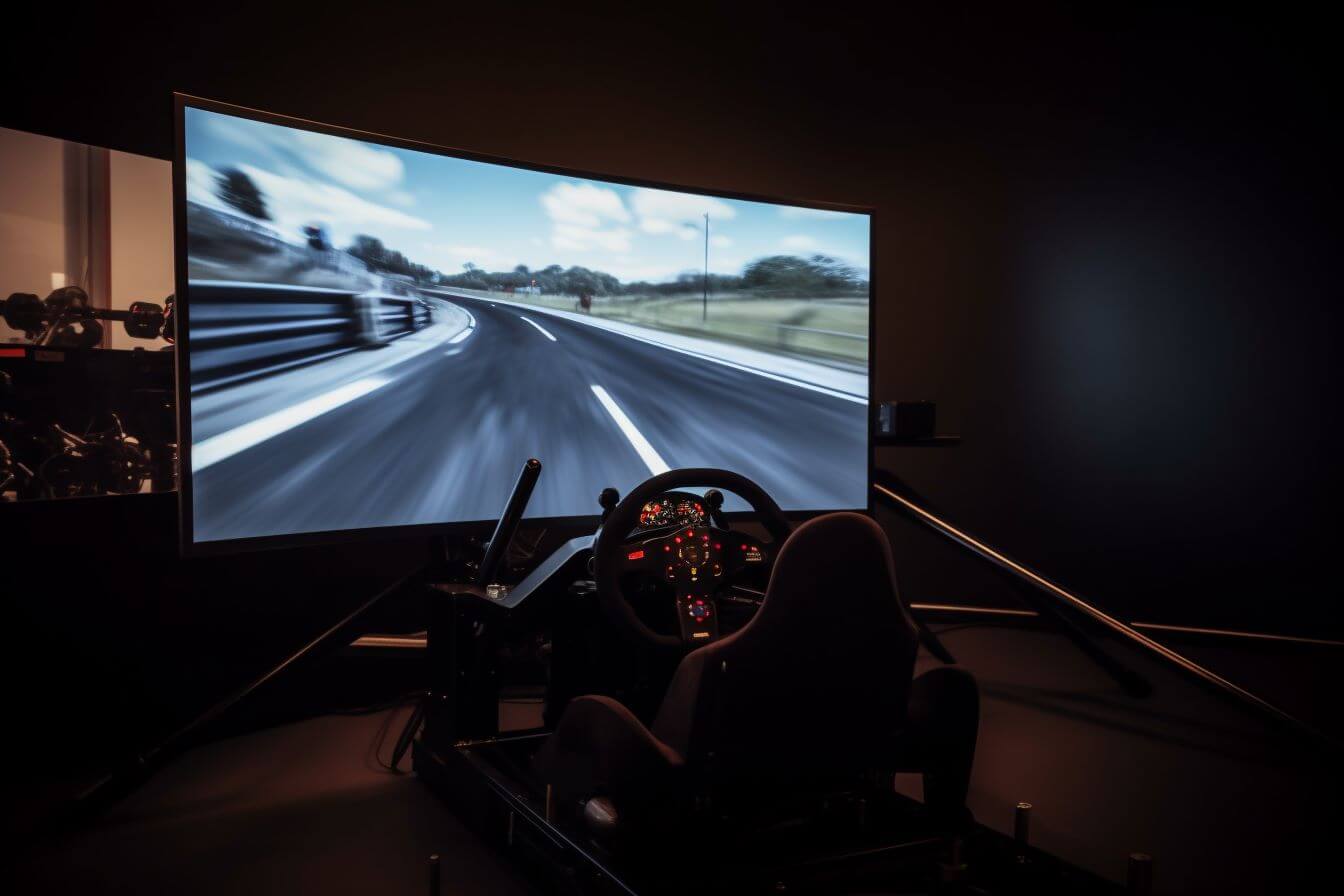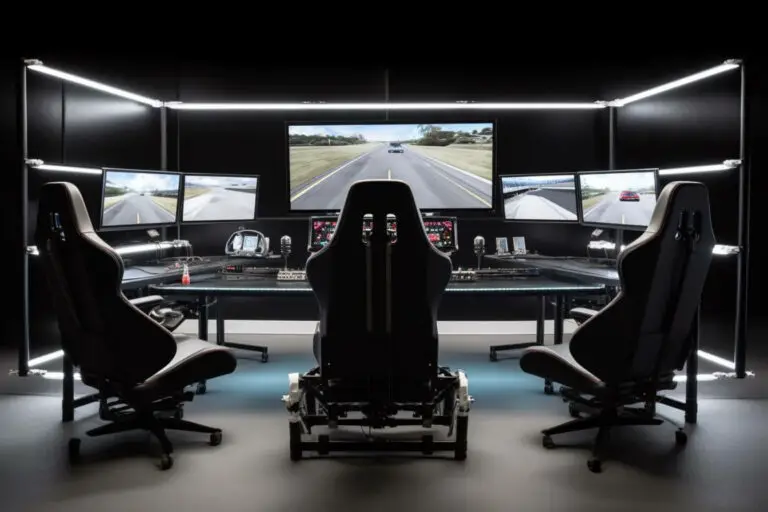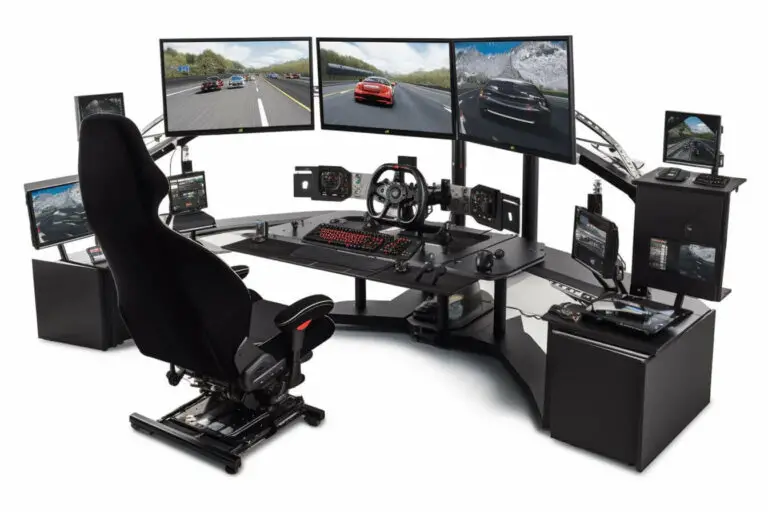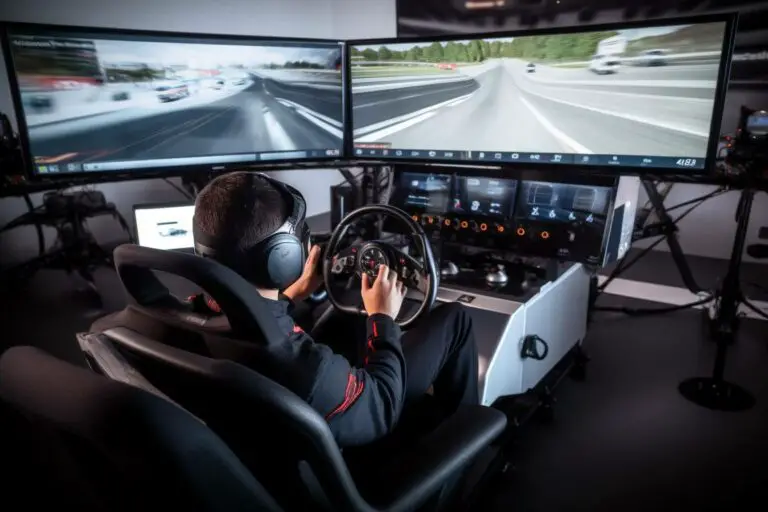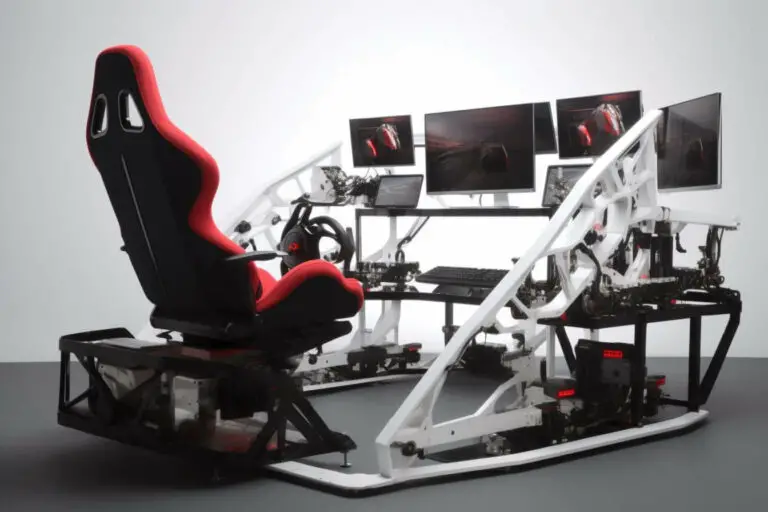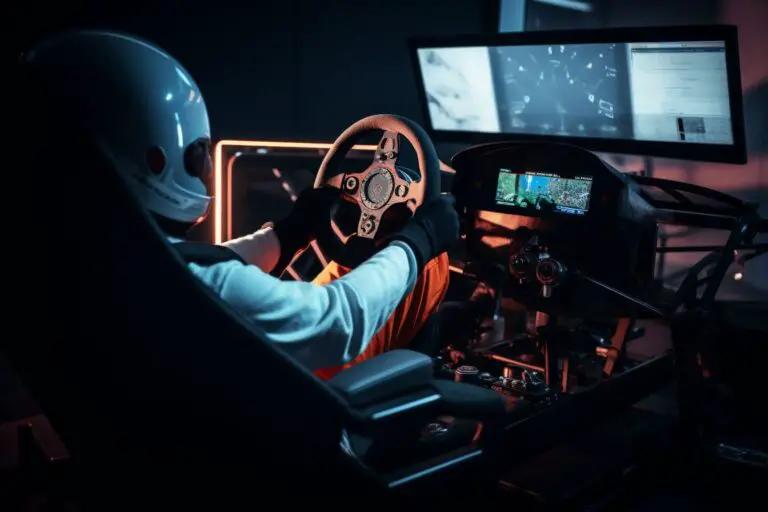What Are The Top Techniques To Master Corners In Sim Racing?
- What Are The Top Techniques To Master Corners In Sim Racing?
- Grasping Weight Transfer Dynamics
- Identifying Optimal Braking Points
- Discovering The Ideal Racing Line
- Perfecting Trail Braking
- Utilizing Throttle Control
- Implementing Apex Techniques
- Learning From Professional Sim Racers
- Frequently Asked Questions
- How Do Different Car Setups And Configurations Affect Cornering Performance In Sim Racing?
- What Role Does Tire Management Play In Mastering Corners And Maintaining Optimal Grip Levels?
- How Can Sim Racers Practice And Improve Their Cornering Consistency Over Long Race Durations?
- Are There Any Specific Exercises Or Training Routines That Can Enhance A Sim Racer's Reaction Time And Coordination For Better Cornering?
- How Do Various Weather Conditions And Track Surfaces Impact Cornering Techniques And Strategies In Sim Racing?
- Conclusion
Sim racing has exploded in popularity, with gamers and motorsport enthusiasts alike flocking to this virtual world of speed. The adrenaline rushes you get from conquering a sharp turn or overtaking your opponents is something that’s hard to match. But, as thrilling as it may be, sim racing can also prove incredibly challenging – especially when it comes to mastering corners.
If you’re struggling to navigate those tricky bends or simply looking for ways to up your game, we’ve got you covered. In this article, we’ll reveal the top techniques used by professional sim racers to tackle corners like a pro. From understanding weight transfer and braking points to finding the ideal racing line and perfecting trail braking, these tips will help transform your cornering skills overnight.
So buckle up and let’s dive into the secrets behind taking corners flawlessly in sim racing!
Other Interesting Articles to improve your Sim Racing Techniques
How To Improve Your Sim Racing Lap Times: Shave Seconds Off Your Lap Time
How Can I Optimize My Car Setup for Faster Lap Times in Sim Racing?
Discover the Insider Tips for Smoother Braking and Acceleration in Sim Racing
Which Driving Aids Can Help You Become a Faster Sim Racer?
How to Consistently Hit the Perfect Racing Line for Ultimate Speed
What Can You Learn from Pro Sim Racers to Boost Your Performance?
Uncover the Mental Strategies to Stay Focused and Improve Your Sim Racing Skills
How to Analyze Telemetry Data to Unlock Your Full Sim Racing Potential
How to Train Your Way to Sim Racing Greatness: Tips, Tricks, and Techniques
Grasping Weight Transfer Dynamics
Grasping weight transfer dynamics is essential for mastering corners in sim racing. As you approach a corner, the weight of your virtual car shifts from one side to another, affecting its balance and grip on the track. It’s crucial to understand how these changes impact your vehicle’s handling abilities so that you can adjust your driving style accordingly.
One way to gain a better understanding of weight transfer dynamics is by practicing smooth inputs with both steering and pedals. Gradual adjustments help maintain stability in your car while navigating through corners, ensuring optimal grip levels throughout the turn. This means avoiding abrupt movements with controls or slamming down on brakes, as doing so may lead to an unbalanced car or even a spinout.
A helpful method for visualizing weight transfer involves imagining a ball inside the cockpit of your racecar that moves in response to braking, acceleration, and lateral forces. When you brake before entering a corner, imagine the ball rolling forward; when accelerating out of it, picture it moving rearward. Similarly, during left turns, visualize the ball shifting right and vice versa for right turns.
By internalizing this mental model of weight distribution within your vehicle, you’ll develop greater control over corners and steadily improve your lap times without relying on conjunctive adverbs conjoining sentences or other crutches.
Identifying Optimal Braking Points
Mastering corners in sim racing may seem like an elusive art at first, but fear not! With a bit of practice and attention to detail, you’ll soon be navigating those bends with the finesse of a seasoned pro.
One crucial aspect that can make or break your cornering prowess is pinpointing the perfect braking points. In this section, we’ll delve into some key strategies for identifying optimal braking zones so you can shave precious seconds off your lap times.
When scoping out the ideal spot to hit the brakes, consider these four factors:
- Track layout: Familiarize yourself with each circuit and take note of any elevation changes, tight turns, or blind spots.
- Car capabilities: Understand how different vehicles handle under various conditions and tailor your approach accordingly.
- Reference markers: Use trackside objects such as signs, curbs, or trees as visual cues to help gauge when it’s time to slow down.
- Driver intuition: As you gain experience behind the wheel, trust your instincts – they often know best!
Over time and through consistent practice, recognizing optimal braking points will become second nature. By leveraging this newfound skill alongside other techniques discussed in our guide on mastering corners in sim racing, you’re well on your way toward achieving virtual driving greatness.
So go ahead – put pedal to metal (or rather…plastic) and tackle those twisty circuits with confidence!
Discovering The Ideal Racing Line
Having discussed the importance of identifying optimal braking points, let’s now delve into mastering corners in sim racing. This crucial skill will not only improve your lap times but also enhance your overall driving prowess.
There are several techniques that can be employed to achieve this mastery.
Firstly, one must understand the concept of trail braking. Trail braking involves gradually releasing the brake pedal while entering a corner and simultaneously beginning to turn the steering wheel. This technique allows for better weight transfer and helps maintain traction at the front tires, resulting in improved cornering speed and stability.
Additionally, it is essential to familiarize yourself with different types of corners – such as hairpins, chicanes, and high-speed sweepers – since each requires a unique approach.
Another vital aspect of mastering corners is discovering the ideal racing line. The racing line refers to an imaginary path around a track that minimizes lap time by taking turns in the most efficient manner possible.
To find this line, you should strive to enter each corner wide and aim for the apex or the geometric center of the curve. Hitting the apex allows drivers to straighten out their trajectory sooner than if they were following a wider path through the bend, thereby enabling them to apply throttle earlier and exit turns faster.
Remember that practice makes perfect; over time, experimenting with various lines on different tracks will enable you to discern which route works best for specific situations.
Perfecting Trail Braking
Did you know that trail braking can reduce your cornering time by up to 20%? This advanced driving technique is crucial for sim racers looking to shave valuable seconds off their lap times. Mastering this skill will not only help you maintain higher speeds through corners but also give you a better understanding of the balance and grip levels in your virtual racing car.
To perfect trail braking, follow these four essential steps:
- Begin with threshold braking: Apply maximal brake pressure right before entering the corner while keeping the tires at their peak grip level.
- Ease off on the brakes gradually: As you approach the turn-in point, start releasing brake pressure smoothly without completely lifting your foot.
- Maintain balanced weight distribution: Maintain some brake pressure as you enter the apex to keep weight over the front wheels, which helps increase traction and control during cornering.
- Smoothly transition to acceleration: Release any remaining brake pressure once past the apex and gradually apply throttle as you exit the corner.
It’s important to remember that practice makes perfect when it comes to mastering trail braking in sim racing. Spend dedicated time refining this technique in different vehicles and track conditions until it becomes second nature.
The more comfortable you become with trail braking, the faster your lap times will be – allowing you to climb leaderboards and outperform competitors consistently! So get behind the wheel, work on those inputs, and watch those milliseconds fall away as you master one of sim racing’s most critical skills.
Utilizing Throttle Control
One of the most important techniques to master when navigating corners in sim racing is throttle control. Throttle control refers to the act of carefully managing your accelerator input to maintain a smooth and balanced speed throughout the corner.
This can be challenging, especially for those new to sim racing or those transitioning from real-world driving where they may rely more heavily on automatic systems like traction control. To effectively utilize throttle control, it’s essential to first familiarize yourself with the braking points and turning points for each specific track you’re racing on.
By knowing these key elements, you can then better anticipate when to begin easing off the throttle as you approach a corner. As you enter the turn, gradually reduce your acceleration while maintaining enough power so that your car remains stable and well-balanced through the entirety of the curve. It’s important not to completely let off the gas, but rather feather it gently as needed.
The goal here is to avoid sudden movements which could cause instability or an unwanted loss of grip. As you continue honing your skills in throttle control, remember that practice makes perfect. Be patient with yourself and give yourself time to learn how much pressure should be applied at various stages within corners.
Regularly practicing this technique will eventually lead to smoother lap times and improved overall race performance. So keep working on mastering throttle control, along with other essential driving techniques such as braking and steering inputs, and soon you’ll find success out on the virtual racetrack!
Implementing Apex Techniques
Mastering corners in sim racing is like learning the steps to an intricate dance – with each precise movement, you become more fluid and confident. As a sim racer, one of the fundamental skills you must develop to improve your lap times is mastering cornering techniques. Implementing apex techniques will not only help you maintain control over your vehicle but also significantly reduce your lap times.
To effectively implement apex techniques, keep these three key factors in mind:
- Identify the optimal entry point: Before approaching a turn, scan the track ahead and determine where the ideal entry point lies for that specific corner. This will enable you to maximize speed while maintaining stability.
- Smoothly apply throttle and brake inputs: A crucial aspect of any successful apex technique involves applying both throttle and brake inputs smoothly throughout the cornering process. Avoid sudden or harsh actions on either input as this can lead to loss of control or slower exit speeds.
- Maintain proper vision: Throughout the entire cornering sequence, ensure that your eyes are focused on important reference points such as braking markers, turning-in points, apexes, and exit points. Proper vision allows you to plan your trajectory through each turn accurately.
As you practice implementing these essential elements into your race strategy, remember that no two turns are exactly alike – just like no two dances have identical choreography. Familiarizing yourself with different types of corners (such as hairpins, chicanes, or sweepers) will allow you to adapt your driving style accordingly and efficiently navigate through various track layouts.
By meticulously honing these apex techniques in sim racing, soon enough you’ll be gracefully gliding around every bend – all while watching those precious seconds tick off from your lap times!
Learning From Professional Sim Racers
Having explored the intricacies of implementing apex techniques, it is essential to take a step further and learn from those who have excelled in the world of sim racing. Professional sim racers possess an incredible wealth of knowledge and experience that can be invaluable for anyone looking to improve their cornering skills within simulation games.
By observing these experts’ strategies, you can identify critical aspects of mastering corners and implement them into your own virtual driving style. One enlightening approach is to watch live streams or recorded videos of professional sim racers as they navigate various tracks. Pay close attention to their steering inputs, braking points, gear shifts, throttle application, and overall car control when approaching corners. Analyzing their decision-making process during races will help deepen your understanding of how specific cornering techniques are used effectively under different circumstances.
Additionally, many pro sim racers share tips and tricks through social media platforms or even offer coaching services; engaging with this content can provide valuable insights for improving your performance on the track.
Another significant aspect is networking within the sim racing community by joining forums or online groups dedicated to discussing race strategy and tactics. Engaging in conversations with experienced drivers allows you to ask questions about particular techniques while receiving constructive feedback about your current approach. This exchange not only expands your knowledge but also fosters camaraderie among fellow enthusiasts striving towards similar goals – becoming better at mastering corners in sim racing competitions.
Frequently Asked Questions
How Do Different Car Setups And Configurations Affect Cornering Performance In Sim Racing?
Imagine the exhilaration of gliding through a sharp bend with precision, feeling the tires grip and maintaining control as you navigate each corner flawlessly.
In sim racing, different car setups and configurations play a crucial role in affecting cornering performance.
The suspension system, tire pressure, camber angles, ride height, and even aerodynamics can all impact how your virtual vehicle tackles those challenging turns.
By fine-tuning these various aspects to suit your driving style and track conditions, you’ll be better equipped to conquer corners with ease and consistency – ultimately enhancing your overall sim racing experience.
What Role Does Tire Management Play In Mastering Corners And Maintaining Optimal Grip Levels?
Tire management plays a crucial role in mastering corners and maintaining optimal grip levels in sim racing, as it encompasses several factors that directly impact the performance of your virtual vehicle.
Proper tire management involves monitoring tire temperatures, pressures, and wear to ensure they remain within an ideal range throughout the race.
By managing these aspects effectively, you can maximize cornering speed while minimizing the risk of losing control due to reduced traction or sudden tire failure.
Additionally, understanding how different track surfaces and weather conditions affect tire performance will allow you to make informed decisions about when to push harder or conserve tires for better overall lap times and race results.
How Can Sim Racers Practice And Improve Their Cornering Consistency Over Long Race Durations?
Imagine you’re a sim racer competing in a 24-hour endurance race, where maintaining consistent and precise cornering is crucial for success.
To practice and improve your cornering consistency over long race durations, it’s essential to develop muscle memory through repetition and focused training sessions.
Spend time practicing specific corners or sections of the track while focusing on hitting your braking points, turn-in points, and apexes consistently.
Analyzing telemetry data can be beneficial in pinpointing areas that require improvement and monitoring progress over time.
Additionally, participating in longer races or stints within team events will help build mental stamina and adaptability required for staying sharp during extended periods behind the wheel.
Remember that tire management plays an important role as well; thus, being mindful of optimal grip levels throughout the race enables better control when navigating turns.
Are There Any Specific Exercises Or Training Routines That Can Enhance A Sim Racer’s Reaction Time And Coordination For Better Cornering?
To enhance a sim racer’s reaction time and coordination for better cornering, they can engage in specific exercises or training routines that target these skills.
Incorporating activities such as reflex training drills, hand-eye coordination exercises (like juggling or playing catch), practicing with rhythm-based games, and utilizing specialized software designed to improve reaction times can all be beneficial.
Additionally, regularly participating in physical fitness activities like cardio workouts and strength training can contribute to overall mental sharpness and faster reflexes.
By dedicating time to develop their reaction time and coordination through targeted practice, sim racers will find themselves better equipped to navigate corners with precision and consistency during races.
How Do Various Weather Conditions And Track Surfaces Impact Cornering Techniques And Strategies In Sim Racing?
Just as a chameleon adapts to its environment, sim racers must adjust their cornering techniques and strategies according to the ever-changing weather conditions and track surfaces.
In sim racing, factors such as precipitation levels, temperature fluctuations, and surface materials can significantly impact tire grip, vehicle handling, and braking distances.
As a result, mastering corners becomes an intricate dance of adapting driving styles to maintain control while optimizing performance.
To excel in these dynamic scenarios, sim racers should practice taking turns at various speeds and angles in different environments to comprehend how each factor affects their virtual vehicles’ behavior on tracks ranging from rain-soaked asphalt to dusty gravel roads.
Conclusion
In conclusion, mastering corners in sim racing truly requires a combination of factors: understanding car setups, managing tire wear, and honing consistency.
It’s no coincidence that the best sim racers also excel at adapting to various weather conditions and track surfaces.
So, keep practicing and experimenting with different techniques and strategies. You’ll find yourself gradually improving your reaction time, coordination and overall cornering performance.
Remember, even the pros had to start somewhere!

